6 things making your living room furniture look cheap – explore the key mistakes to avoid and what designers do instead
Discover 6 reasons why your living room furniture is letting down your house – and how to avoid it


When it comes to designing the perfect living room, aside from flooring and wall color, the living room furniture plays a pivotal role in shaping the room's success. The conundrum is where and how to start.
Even if you are decorating on a budget, there is no reason for your space to look cheap, unusable, or unattractive. In many cases, the things that make your furniture look cheap aren't even a reflection of wealth.
In the sitting room, comfort is essential. Your chosen living room furniture ideas should feel timeless but inviting, like an oversized plush sofa with a lived-in fabric. There is nothing worse than sitting on a sofa that is too firm and it makes a house feel sterile. Vintage furniture often nails that balance, offering craftsmanship and character that bring soul to a room.
There are many other affordable ways you can make a home look expensive. Below we share what makes living room furniture look cheap – and expert advice on how to avoid it.
1. Swap matching furniture sets and mass-produced pieces for lived-in luxury
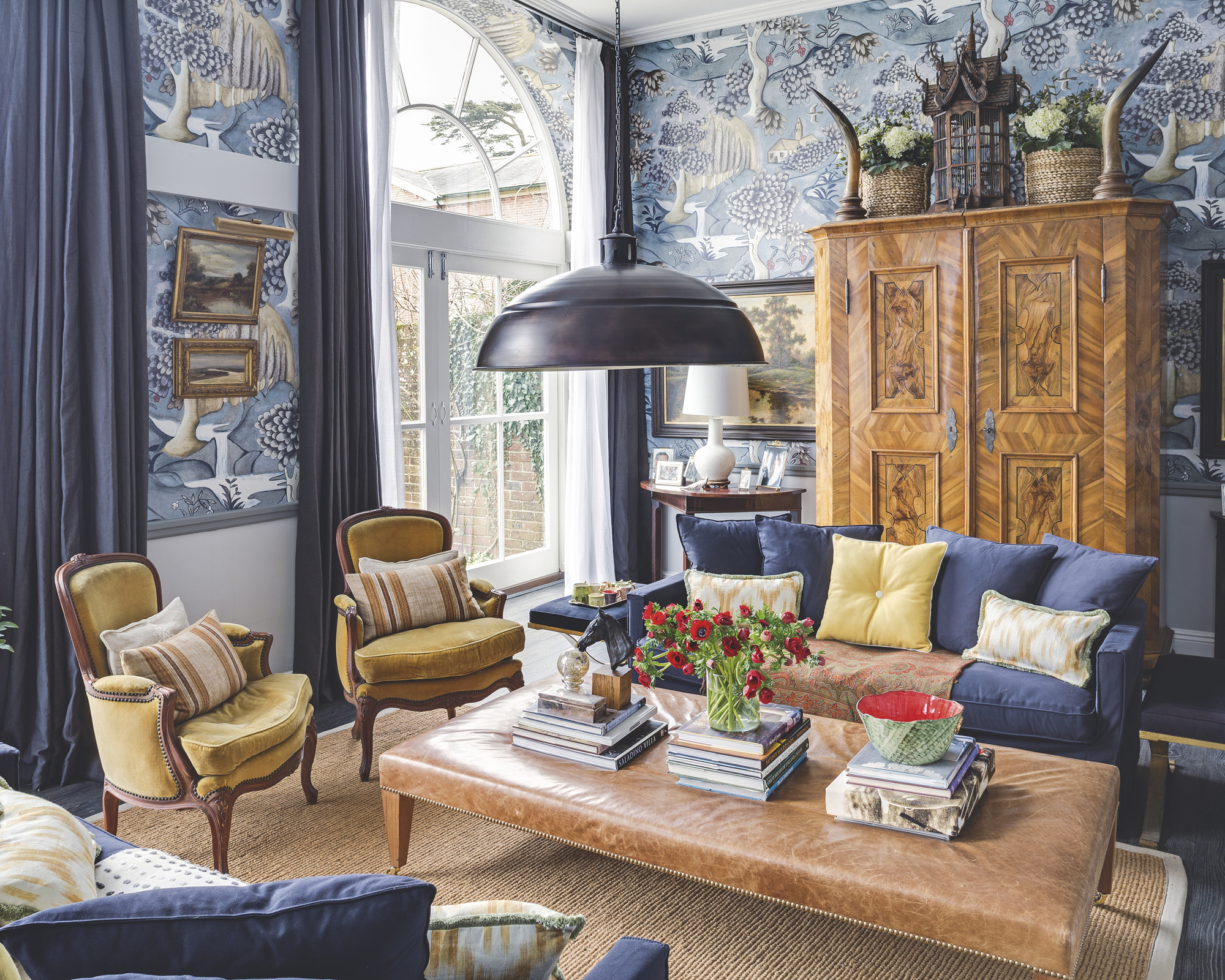
Cookie-cutter, mass-produced living room furniture did a roaring trade in the early 1990s but has more recently fallen out of favor with homeowners and decorators in favor of custom-made carpentry and vintage finds.
The whole purpose of a home is to answer the needs of the individuals living in it while reflecting their personalities through good design, space, and functionality. This is why overproduced, impersonal purchases are making our homes look dated and undesirable.
Thankfully, recent living room furniture trends have shown a shift towards curating more sustainable, soulful living rooms. 'If unsure, always be bold,' advises Tiffany Duggan, founder and director of Studio Duggan. 'Clients hardly ever regret investing in one-of-a-kind vintage pieces. Think of your space as a carefully curated Aladdin’s cave of treasures, with each item on display even more fascinating than the last.'
Design expertise in your inbox – from inspiring decorating ideas and beautiful celebrity homes to practical gardening advice and shopping round-ups.
Undeniably, individualism is in, as more and more people turn their backs on over-consumption and mass production and towards vintage, bespoke, made-to-measure goods and services.
Style mavens such as hotelier Kit Kemp are masters in the fine art of embracing individual design. But if you're new to this trend, you’d be wise to exercise caution, otherwise, your experimentation could end up one hot mess. So prefix maximalism and individualism with an adjective such as ‘considered’, ‘elegant’, or ‘curated’ and you can make it work.
The trick to creating a unique aesthetic is finding a common hook from which everything else hangs. Leave the matchy-matchy look to staunch minimalists, and always go with whatever you love first and foremost.
2. Do away with themed furniture and curate a space all your own

It wasn't so long ago when themed spaces adorned homes up and down the country, but these days, any sensible designer will resign the hokey signage, and steamer trunks to the history books.
Instead, if you want to give your living or family room character and personality, use tried-and-tested furniture combinations that add texture and warmth, and stay away from anything that can appear like a product of its time. For example, I would avoid going too coastal or nautical, unless you live by the seaside. It would feel inauthentic to do so.
Classic furniture pieces are like the little black dress of interior design – they never go out of style and always look sophisticated. Age-old furniture styles, such as mid-century modern living room ideas, traditional living rooms, and charming country living rooms will stand the test of time due to their craftsmanship, enduring materials, and versatile aesthetics.
A living room is the heart and soul of your home and should reflect you as an individual, says Henriette von Stockhausen of VSP Interiors. 'It is a room of its own and should be treated as such with a bold design that will wow. As the living room is where guests are often stationed for most of the night, it should say something about you and set the mood for the rest of the house.'
Mix and match furniture from across decades and styles, but find one red thread to tie it all together; it could be a certain type of timber, a color pulled from a favorite piece of art, or even a rug. The final look should be cohesive, but not cookie-cutter.
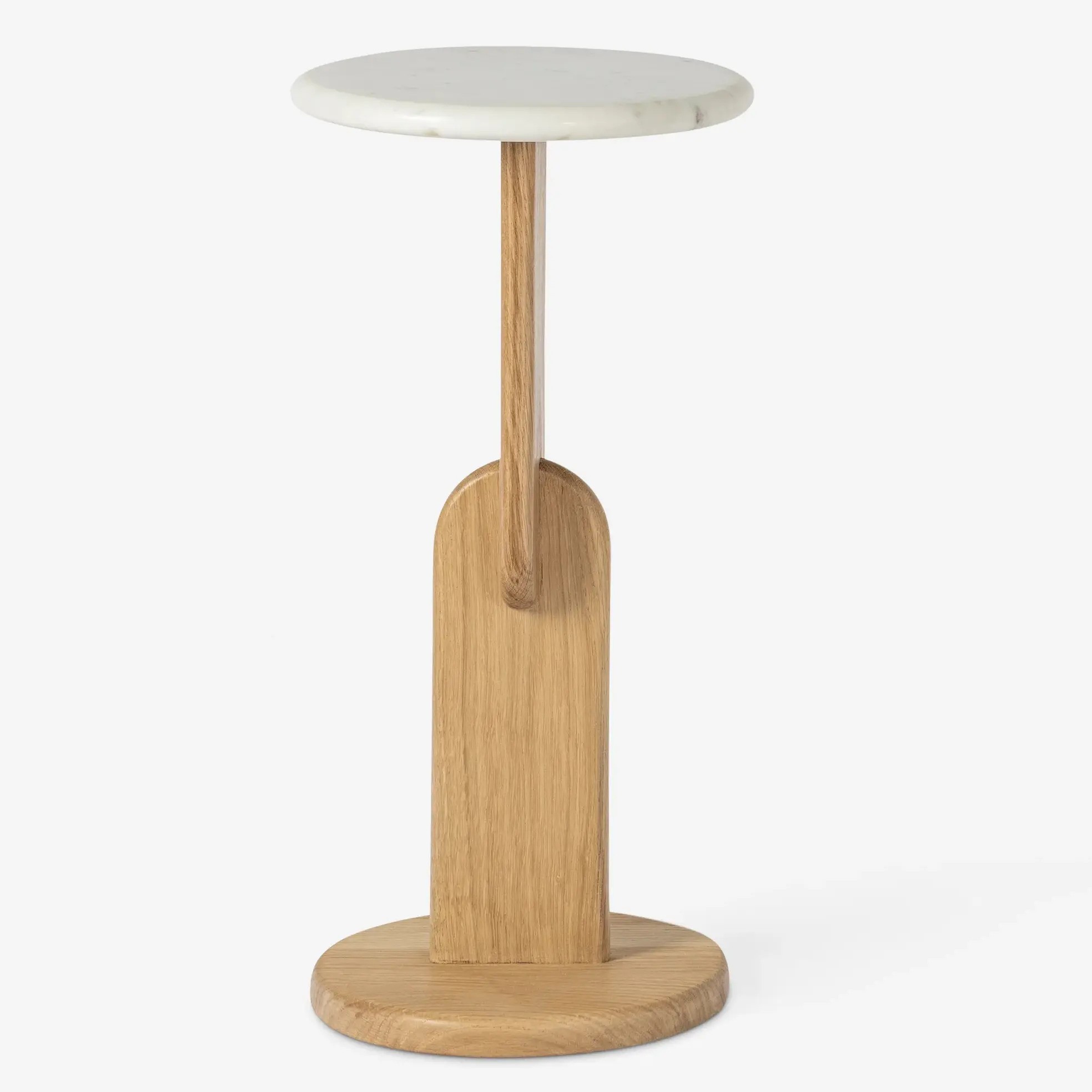
This side table keeps selling out, and it is easy to see why it is so beloved. The design brings an artful poise to timeless materials, which is key to ensuring your space looks 'expensive'. Plus, it is the perfect perch for an afternoon drink.
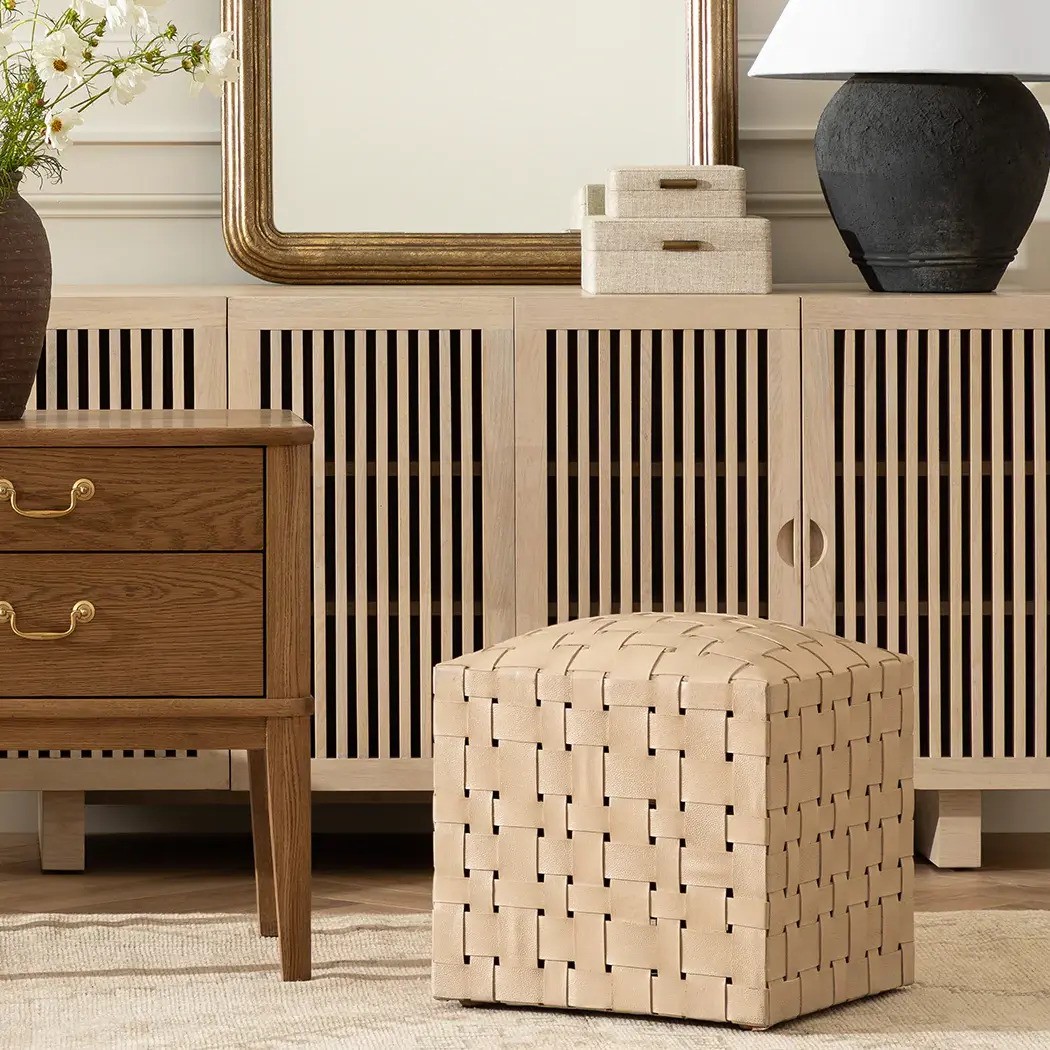
The importance of introducing texture in interior design should never be underestimated. Refined in style, this intricate woven leather ottoman will lend both texture and visual interest to your living space. It is the first thing I purchased in the New Year, and I only wish I did sooner.

The Magnolia collection at Target, designed by Joanna Gaines, is exceptional value for money. Add an elegant seating solution to any space with this carefully-crafted armchair. Constructed from real wood in an aged oak finish, this upholstered armchair features a padded seat and back, and soft boucle fabric for a comfortable and stylish focal point.
3. Hide the TV with a bespoke built-in and art
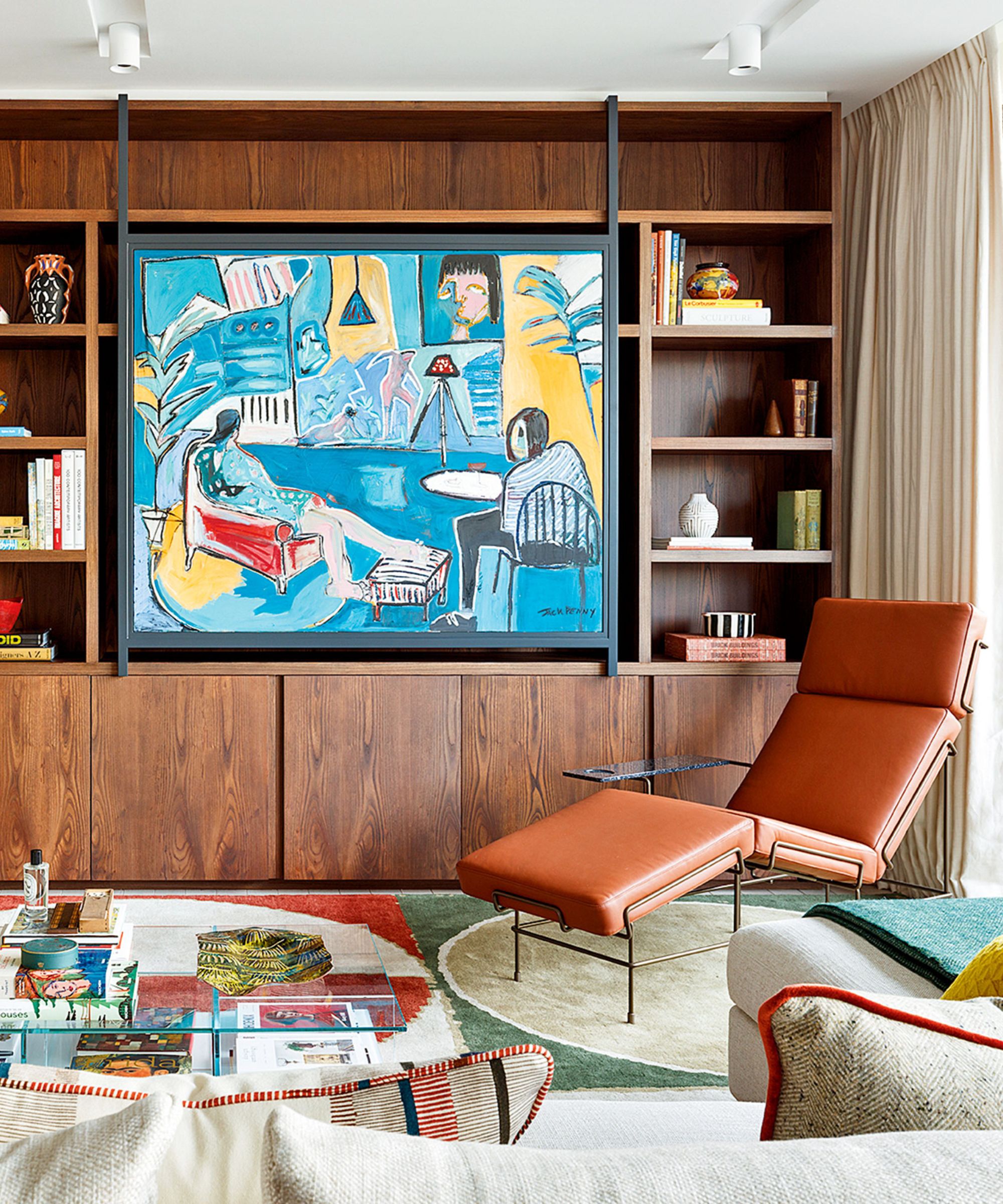
An unsightly TV stand idea is one of the biggest faux pas I see when designing a living room. The TV is a ubiquitous presence but its black reflective screen is regarded as an eyesore by decorators. The most common solution is to house it in a specially designed cabinet, but it’s not the only one.
At first glance, this room looks colorful and bold using Studio Ashby’s signature mix of antiques, bespoke pieces, and contemporary design. The surprise is that the art can slide aside revealing the TV behind.
‘The TV must never be on show; that’s one of our rules at Studio Ashby,’ says founder and creative director Sophie Ashby. ‘In every project, we’ll commission joinery to conceal it like in this project in London’s Mayfair, where we’ve used this beautiful Jack Penny artwork to hide the TV.’
4. Switch out jarring colors for a failsafe quiet luxury palette
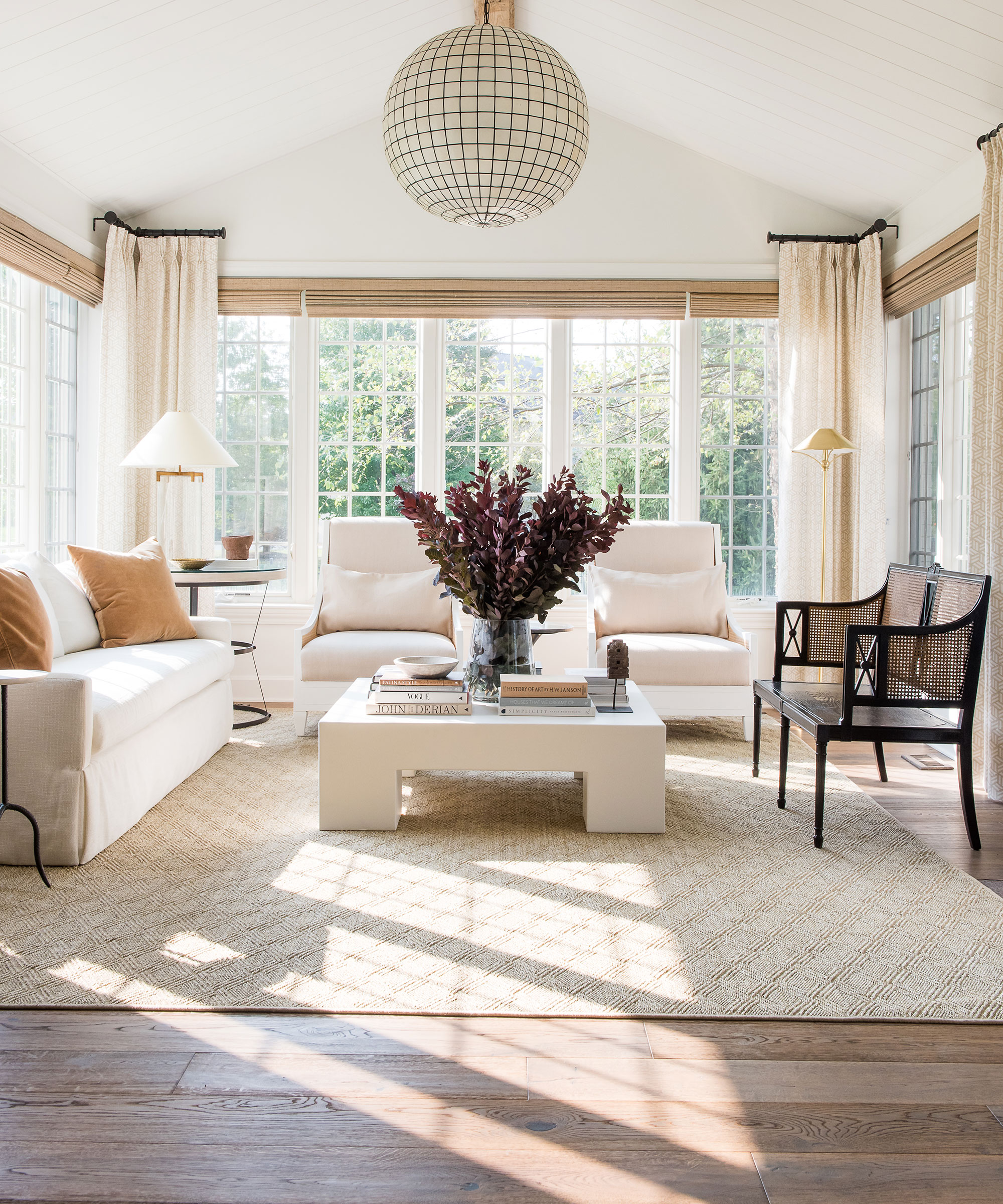
Color can be transformative in interior design, so choosing the right hue for your living room furniture can present endless choices and subtle nuances to understand and overcome. However, if you've been religiously following certain living room color ideas, you could be doing more harm than good.
As a general rule of thumb, many of the world's best interior designers will say that you should never decorate your entire home in one singular color for fear it will fall flat. That isn’t to say that you can’t use the same color palette throughout your entire home. For example, if you love decorating with neutrals, then use different variations of this one color palette for your furniture to create harmony from room to room.
The color of your chosen furniture is just as important as your wall color. If in doubt, I always advise people to stick to a palette of 'quiet luxury colors'. Decorating with beige, taupe, greige, sand, and warm-toned green, inspired by colors from the natural world, adds a gentle and soothing touch to interiors that can be layered with textures and tones to ebb and flow with the seasons.
'Choosing a living room furniture color scheme in harmony with the rest of your home is crucial to not only your home's aesthetic but also your mood and well-being,' says Becca Casey of Becca Interiors.
5. Don't overcrowd small rooms – decorate with the 'rule of three' instead
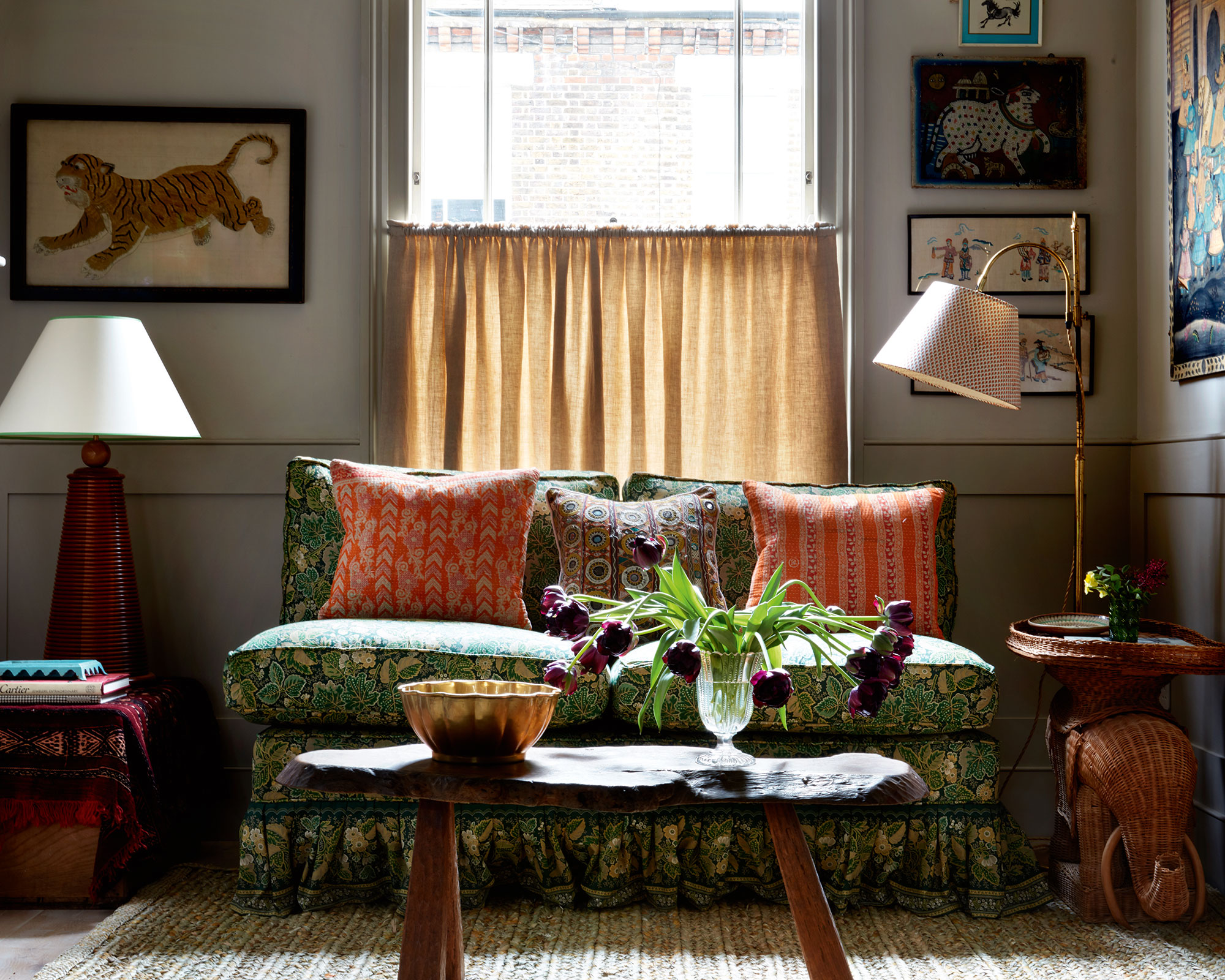
Decorating a small living room is one of the most tricky tasks to master. However, small rooms are often my favorite spaces to design and plan. A well-designed scheme can feel just as comfortable as a larger space, with all the coziness and comfort associated with family living. It is a common misconception that the smaller the room, the smaller the furniture and furnishing should be – the opposite is true.
‘Furnishings play an essential role in how a space is received,' says James Thurstan, founder, of Thurstan. 'When working with less spacious living room layouts, we recommend a considered curation of essential pieces – spreading a large rug as an anchor for the scheme and then building out from there, picking out tones from the rug and embellishing these throughout the room. A central table can create a focal point in a smaller room, best framed by inward-facing armchairs which help create depth and volume.’
It is also crucial not to opt for furniture that is too small. Ensure your table and chairs are large enough that they don't look 'silly', but not too oversized that they don't allow enough space to freely move around the room without bumping into the furniture.
When it comes to living room seating ideas, my advice is to include a two or three-seater sofa, and two armchairs if you can. A pyramidal arrangement leads the eye around the group of three – and it’s a shape that’s frequently employed by designers exploiting the power and rule of three. Many designers agree that an odd number has a winning edge over the classical, symmetrical layout.
6. Invest in bespoke storage instead of freestanding designs
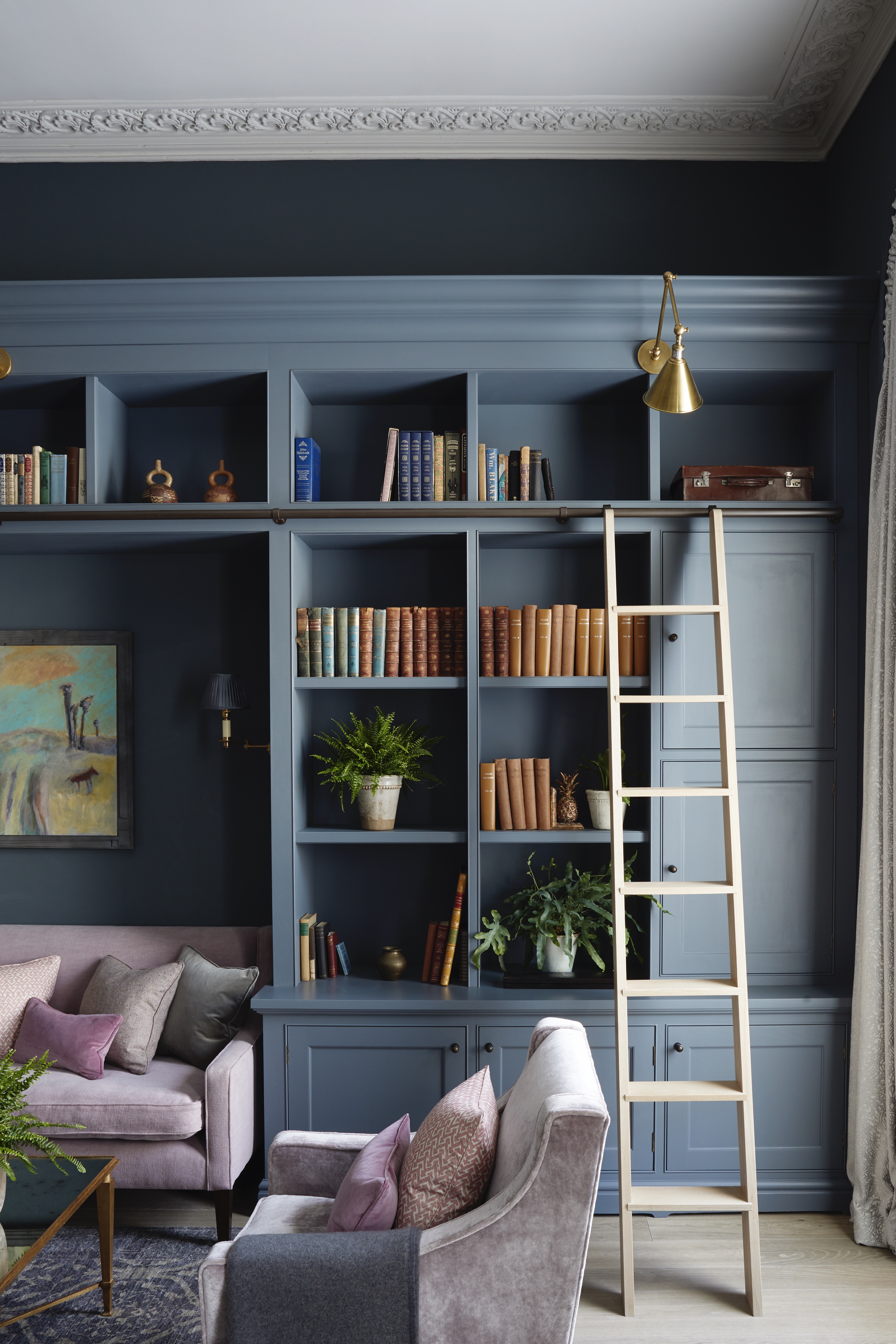
Finding the right living room furniture often has to do with scale and putting the perfect pieces in the right spot. If you need to maximize space, it’s worth having something made bespoke or going the extra mile to find an antique with the right proportions.
'Built-in furniture gives people precisely what they require,' agrees Charlotte Crosland, founder of Charlotte Crossland Interiors. 'It works particularly well in boxy or long living rooms, and those areas that are awkwardly shaped.'
In the room shown above, this beautiful wall of bespoke joinery painted in a moody hue is hugely characterful and provides plenty of open and closed storage.
Like a tailored Savile Row suit, a bespoke piece of furniture should fit perfectly, function beautifully and look fantastic: some go as far as to dub it ‘interior couture’. Like their catwalk counterparts, artisan-designed solutions are an investment, but they offer standout and esoteric results. They also function much better than an off-the-peg storage idea, which can often make a living room look cheap.
‘We used a deep smoky color on the walls and joinery of this north-facing space’ says Emma Sims-Hilditch, founder and creative director for Sims Hilditch. ‘The aim was to embrace the darkness of this space, transforming it into a moody and cozy haven. Soft wall and overhead living room lighting add to the ambiance – and should be considered at the same time as your furniture.'
Best places to buy living room furniture
- Anthropologie
- Amazon
- Bloomingdale's
- CB2
- Crate & Barrel
- Lulu and Georgia
- McGee & Co.
- Nordstrom
- Serena & Lily
- Target
- The White Company
- Wayfair

Jennifer is the Digital Editor at Homes & Gardens, bringing years of interiors experience across the US and UK. She has worked with leading publications, blending expertise in PR, marketing, social media, commercial strategy, and e-commerce. Jennifer has covered every corner of the home – curating projects from top interior designers, sourcing celebrity properties, reviewing appliances, and delivering timely news. Now, she channels her digital skills into shaping the world’s leading interiors website.